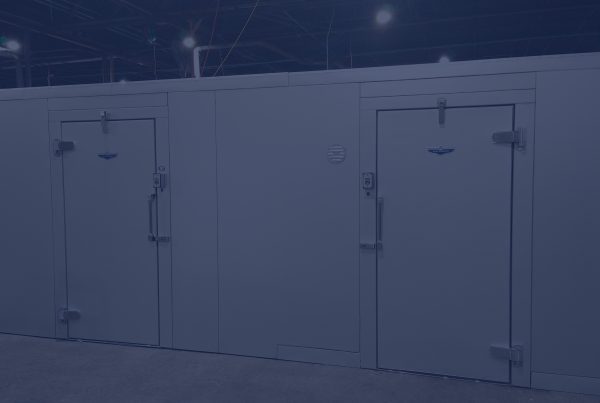This article is courtesy of Austin Industrial Refrigeration.
Flowers do best with High Humidity and Low Velocity refrigeration
Aside from the box temperature, other considerations that are particular to medium temperature applications (walk-in coolers & refrigerators) are the air velocity and humidity of the refrigerated space. Below freezing, humidity is inherent (the moisture is mostly frozen out of the air), so low temp applications are easier to spec than medium temp.
The following are common design parameters and examples of their application:
- 35 degrees F / 90%+ relative humidity (low velocity coils) – high humidity – Used for: sensitive materials, floral – roses
- 35 degrees F / 85% – 90% relative humidity – general purpose – Used for: foodservice, fresh meats, packaged goods not sensitive to humidity, short-term mixed produce, thawing, and dry goods unaffected by humidity
- 35 degrees F / 60% – 75% humidity – low humidity – Used for: retail, beer and beverage coolers, packaged items, materials sensitive to humidity
- 45 degrees F / 55% – 70% humidity – low humidity – Used for: aging red wine
- 45 degrees F / 90%+ humidity (low velocity coils) -high humidity – Used for: sensitive materials, floral – general
- 55 degrees F / 55% – 70% humidity – low humidity – Used for: processing rooms occupied by personnel
- 55 degrees F / 60% – 75% humidity (low velocity coils) – low humidity – Used for: produce
Have you ever picked up a 12-pack of product at the convenience store and the wet cardboard broke sending the cans across the floor? Well, that was an improperly applied refrigeration system. The refrigeration system in that event was likely rated for general purpose and the humidity damaged the packaging which was an important aspect of the purchase in order to get it out the door.
We control the humidity in a space by manipulating the temperature of the cooling coil. This is accomplished by increasing or decreasing the size of the cooling coil (a smaller coil will be colder than a larger coil). The coil temperature establishes the dew point in the refrigerated air, the temperature at which moisture is condensed from the air.
Flowers get “wind burn”, so we are careful to gently move the air while removing the heat load. Fortunately floral applications benefit from high humidity because in order to do the work with only a gentle breeze, we increase the size of the coil which inadvertently raises the coil temperature. As such, the proper conditions are obtained.




